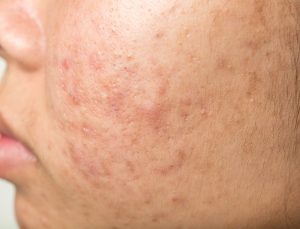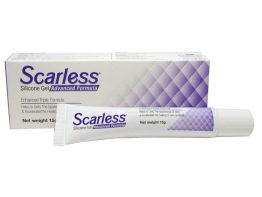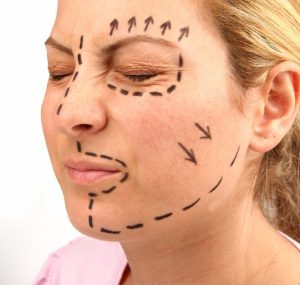Acne scars can be frustrating, often lingering long after breakouts have healed. While acne is difficult to deal with, the scars left behind can affect your skin’s appearance and confidence. Fortunately, many effective treatments are available to help reduce the appearance of acne scars. Here’s a guide to understanding the types of acne scars and how to treat them effectively.
Types of Acne Scars
Before diving into the treatments, it’s important to understand the different types of acne scars:
1. Atrophic Scars: These scars are sunken or indented and are common after severe acne. They include:
- Ice Pick Scars: Small, deep holes that look like the skin has been punctured.
- Boxcar Scars: Broad, sharp-edged depressions in the skin, usually on the cheeks and temples.
- Rolling Scars: Wavy, uneven skin depressions that give the skin a rough texture.
2. Hypertrophic Scars: These are raised scars that occur when the skin produces too much collagen during healing. They are more common on the chest and back.
3. Hyperpigmentation: This isn’t a true scar but a dark spot left after an acne breakout. It can fade over time but may require treatment to speed up the process.
Top Treatments for Acne Scars
Different treatments may be more effective depending on the type and severity of your acne scars. Here are some of the most common and effective methods:
1. Topical Treatments
Over-the-counter and prescription topical treatments can be quite effective for mild acne scars and hyperpigmentation.
- Retinoids: Retinoids, like tretinoin, help increase cell turnover, improve skin texture, and stimulate collagen production. They are great for treating atrophic scars and reducing discoloration.
- Vitamin C: This powerful antioxidant helps brighten the skin and reduce hyperpigmentation left by acne scars. Vitamin C serums are widely available and work well for fading dark spots over time.
- Silicone Gels: Silicone-based products, such as Scarless Silicone Gel, form a protective barrier over scars, helping to soften and flatten them. These gels are particularly effective for hypertrophic scars.
2. Chemical Peels
Chemical peels are effective for treating a range of acne scars. They remove the damaged outer layer of the skin and promote the regeneration of new, healthy skin.
- Salicylic Acid Peels: Salicylic acid is a beta-hydroxy acid that penetrates deep into the skin, helping to exfoliate dead skin cells, clear out clogged pores, and reduce inflammation. It is especially effective for atrophic scars and those with oily and acne-prone skin.
- Glycolic Acid Peels: Glycolic acid, an alpha-hydroxy acid (AHA), exfoliates the skin and stimulates collagen production. It can improve the appearance of shallow acne scars and hyperpigmentation.
- TCA Peels: Trichloroacetic acid (TCA) is a medium-strength chemical peel used to treat moderate to severe acne scars. It penetrates deeper into the skin and can significantly improve the texture and tone of the skin after a few treatments.
3. Microdermabrasion
Microdermabrasion is a non-invasive procedure that uses tiny crystals or a diamond-tipped tool to exfoliate the skin’s surface. It helps smooth out the skin’s texture by removing the top layer of dead skin cells and promoting new cell growth.
Microdermabrasion is ideal for mild atrophic scars and works well for those with oily or combination skin. It helps improve the appearance of rolling scars and hyperpigmentation.
4. Laser Therapy
Laser treatments are one of the most effective ways to treat deeper acne scars, particularly atrophic scars. They work by resurfacing the skin and stimulating collagen production.
- Fractional Laser Resurfacing: Fractional lasers treat only a fraction of the skin at a time, leaving the surrounding skin intact for faster healing. This treatment is effective for treating deeper scars, such as ice pick and boxcar scars.
- Ablative Lasers: These lasers remove layers of the skin, encouraging new skin growth. They are highly effective for deeper acne scars but require longer recovery.
5. Microneedling
Microneedling involves using tiny needles to create micro-injuries in the skin, which triggers the skin’s natural healing process and stimulates collagen production. As new collagen forms, it helps to smooth out the appearance of scars.
Microneedling is highly effective for atrophic scars, including ice pick and rolling scars. It can also help with improving skin texture and overall tone.
6. Dermal Fillers
Dermal fillers can provide immediate improvement for deeper atrophic scars. These injectable fillers, often made of hyaluronic acid or collagen, fill in the depressed areas of the skin, smoothing out the surface.
Dermal fillers are best for rolling and boxcar scars, which leave noticeable depressions in the skin. However, the results are temporary, lasting from six months to a year, so repeat treatments are necessary.
7. Subcision
Subcision is a minor surgical procedure in which a needle is inserted beneath the skin to break up the fibrous tissue pulling the skin down, causing the scar to be depressed. Once the tissue is released, the skin naturally heals and fills the area.
Subcision is an effective treatment for deep rolling and boxcar scars, as it helps elevate the depressed areas for a smoother appearance.
Natural Remedies for Acne Scars
If you prefer more natural options, a few home remedies can help reduce mild acne scars over time. However, natural treatments generally take longer to show visible results.
- Aloe Vera: Aloe vera has anti-inflammatory properties and can help soothe irritated skin while encouraging healing. Applying fresh aloe vera gel to scars daily can help reduce redness and promote skin regeneration.
- Honey: Honey is a natural humectant with antibacterial properties, making it great for keeping the skin hydrated and promoting healing. Using honey as a mask a few times a week may help reduce the appearance of scars.
- Rosehip Oil: Rosehip oil is rich in essential fatty acids and antioxidants that can improve skin texture and fade scars. Applying rosehip oil to scars daily can help lighten them and improve overall skin health.
Prevention Tips to Avoid Future Acne Scars
Preventing acne scars is often easier than treating them. Here are a few tips to reduce the risk of scarring after acne:
- Avoid Picking at Pimples: Picking or popping pimples can worsen inflammation and lead to scars.
- Use Sunscreen: Scar tissue is more prone to hyperpigmentation, so wearing sunscreen daily can prevent scars from becoming darker and more noticeable.
- Treat Acne Early: Address acne breakouts as soon as they occur with appropriate treatments to minimize the risk of scarring.
Final Thoughts
Acne scars can be persistent, but with the right treatment, you can significantly reduce their appearance and achieve smoother, healthier skin. From topical treatments to professional procedures like chemical peels and laser therapy, many effective ways exist to treat acne scars. It’s important to consult a dermatologist to determine the best treatment plan for your skin type and the type of scars you have. You can see noticeable improvements and restore your skin’s natural beauty with patience and consistency.
-
Product on sale
 Scarless Silicone GelOriginal price was: $ 43.00.$ 34.95Current price is: $ 34.95.
Scarless Silicone GelOriginal price was: $ 43.00.$ 34.95Current price is: $ 34.95.



